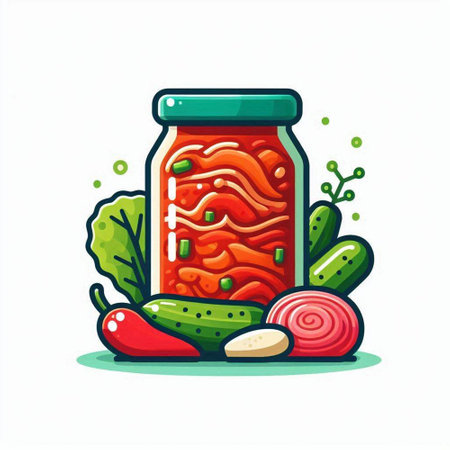Understanding Proteins Role in Avian Health
Protein is an essential building block in every bird’s diet, directly influencing their growth, feather quality, and overall health. Just like humans, birds rely on protein to support muscle development and repair tissues throughout their bodies. For young birds, adequate protein ensures proper growth rates and helps them reach their full potential. Adult birds need protein to maintain strong muscles and optimal organ function. One of the most visible signs of a bird’s health is its plumage—feathers are primarily composed of keratin, a protein-based material. Without enough dietary protein, birds may experience dull or brittle feathers, poor molting, and even increased susceptibility to illness. In short, providing the right amount of protein isn’t just about supporting daily activity; it’s fundamental for a bird’s long-term wellbeing and vibrant appearance.
Signs of Protein Deficiency and Excess in Birds
Recognizing whether your bird is receiving the right amount of protein is crucial for their health and happiness. Just like humans, birds can show physical and behavioral signs when their diet lacks balance—especially when it comes to protein intake. Both deficiency and excess of protein can cause issues, so it’s important to observe your feathered friend closely and adjust their diet as needed.
Physical Signs of Protein Imbalance
If your bird isn’t getting enough protein, you might notice changes in their appearance or energy levels. On the other hand, too much protein can also lead to health problems. Here’s a quick overview:
| Sign | Protein Deficiency | Protein Excess |
|---|---|---|
| Poor Feather Condition | Brittle, dull, slow regrowth after molting | May develop abnormal feather growth or color changes |
| Weight Changes | Unexplained weight loss, muscle wasting | Possible weight gain or swollen abdomen due to organ strain |
| Skin and Beak Health | Dry or flaky skin, soft beak or nails | Possible kidney issues leading to flaky skin or sores |
| Energy Levels | Lethargy, low activity, slow response times | Restlessness or hyperactivity in some cases |
| Droppings | Pale or watery droppings indicating poor absorption | Excessive urates (white part of droppings) from kidney stress |
Behavioral Signs to Watch For
Your bird’s behavior is often the first indicator that something is off with their diet. Birds lacking protein may become less social, vocalize less, or appear withdrawn. In contrast, birds with too much protein might become aggressive or overly active. Paying close attention to these subtle shifts can help you catch dietary imbalances early.
When to Consult a Veterinarian?
If you notice any of these warning signs and suspect a protein imbalance, it’s best to consult an avian veterinarian. They can perform a physical exam and recommend dietary adjustments tailored to your bird’s species and lifestyle. Remember, every bird is unique—what works for one may not work for another.

3. Common and Safe Sources of Protein for Pet Birds
When it comes to supporting your bird’s health, selecting the right protein sources is key. In most American households, it’s possible to provide a variety of nutritious and accessible options that meet your pet bird’s dietary needs. Both plant-based and animal-based proteins can play a valuable role in a balanced avian diet.
Plant-Based Protein Sources
Many birds enjoy and benefit from plant-based proteins. Legumes such as cooked lentils, chickpeas, and beans are excellent choices—just make sure they are fully cooked and unsalted. Quinoa is another great option, offering all essential amino acids in a form that’s easy for birds to digest. Sprouted seeds and grains (like mung beans or sunflower seeds) not only boost protein content but also add important vitamins and minerals. While seeds are naturally appealing to birds, moderation is important since some (like sunflower seeds) are high in fat.
Animal-Based Protein Sources
If you choose to include animal-derived proteins, there are several safe options readily available in American kitchens. Cooked eggs—especially hard-boiled and scrambled without added salt or oil—are highly digestible and packed with nutrients. Small portions of cooked chicken or turkey breast (unseasoned and boneless) can also be given occasionally. Mealworms or crickets, found at many pet stores, are another source birds find irresistible and nutritionally rich.
Important Preparation Tips
No matter which protein sources you select, always serve them plain—avoid seasoning, oil, butter, or any added sugar. Foods should be chopped into manageable pieces to prevent choking hazards, especially for smaller species. Introduce new foods gradually to monitor for preferences and any signs of allergies.
Balance and Variety Matter
While protein is essential, it should be offered as part of a varied diet alongside fresh fruits, vegetables, and whole grains. Over-reliance on any one food group—even healthy proteins—can lead to nutritional imbalances. Consulting an avian veterinarian for personalized guidance is always a smart step in ensuring your feathered friend’s well-being.
4. How to Balance Protein with Other Nutrients
While protein is essential for your bird’s health, it’s just one piece of a well-rounded diet. Overemphasizing protein can lead to health problems such as kidney strain or nutrient imbalances. To help you provide a balanced diet and avoid common pitfalls, here are some tips and a simple table to guide your daily feeding routine.
Tips for a Well-Balanced Bird Diet
- Variety Matters: Offer a diverse mix of foods—don’t rely solely on seeds or pellets. Include fresh vegetables, fruits, grains, and occasional healthy treats.
- Watch Portion Sizes: Protein-rich foods should only make up a portion of the total diet (generally 10–20% depending on species). Consult your avian vet for species-specific recommendations.
- Rotate Ingredients: Change up the protein sources weekly. Alternate between cooked eggs, legumes, and lean meats to provide different amino acids and micronutrients.
- Supplement Wisely: If using commercial supplements or fortified feeds, double-check that you’re not exceeding recommended protein levels.
- Monitor Health: Watch for signs of nutritional imbalance: dull feathers, changes in droppings, decreased energy, or excessive weight gain/loss.
Sample Daily Diet Breakdown
| Nutrient Group | Example Foods | Suggested % of Diet |
|---|---|---|
| Protein | Cooked eggs, beans, lean chicken, tofu | 10–20% |
| Fruits & Vegetables | Kale, carrots, apples, berries | 30–40% |
| Whole Grains | Brown rice, oats, quinoa | 20–30% |
| Seeds & Nuts | Pumpkin seeds, walnuts (as treats) | 5–10% |
Avoiding Common Mistakes
- Avoid feeding only seeds—they are high in fat and low in other nutrients.
- Don’t add extra protein without consulting an avian veterinarian.
The Bottom Line
A balanced approach will keep your bird energetic and healthy. Regularly review their diet and make gradual adjustments based on their life stage and activity level. For best results, partner with an avian specialist who can tailor recommendations to your bird’s unique needs.
5. Tailoring Protein Intake by Bird Species and Life Stage
Every bird is unique, and their protein requirements can vary widely based on species, age, and activity level. For example, parrots, finches, canaries, and budgies all have slightly different needs when it comes to dietary protein. Young birds, especially those still growing or fledglings transitioning from the nest, require higher levels of protein to support healthy development. On the other hand, adult birds that are less active may need less protein to avoid unnecessary weight gain or kidney stress.
Understanding Your Bird’s Needs
It’s crucial to research your bird’s specific species and consult with an avian veterinarian for personalized advice. Breeding birds or those in a period of molting will benefit from increased protein in their diets to help with egg production and feather regrowth. Conversely, older birds or those with certain health conditions may require a more moderate approach to protein intake.
Adjusting Protein Based on Activity Level
The activity level of your pet also plays a significant role. Birds who fly often or engage in frequent play burn more energy and thus may benefit from slightly elevated protein levels. In contrast, companion birds with limited out-of-cage time should have their diets carefully monitored to prevent overconsumption.
Practical Recommendations
Start by observing your bird’s behavior, growth patterns, and overall health. Use high-quality pellet blends as a baseline and supplement with natural sources like cooked eggs or legumes if recommended by your vet. Always introduce new foods gradually and monitor for any changes in droppings, energy levels, or feather condition. By paying close attention to these factors, you’ll be able to adjust protein intake appropriately for your bird’s unique needs throughout every stage of life.
6. Safe Feeding Practices and What to Avoid
Introducing new protein sources into your bird’s diet should always be done with care and patience. Start by offering small amounts of a single new food, and watch for any changes in your bird’s droppings, behavior, or appetite. Birds can be sensitive to dietary shifts, so gradual introduction helps prevent digestive upset and allows you to spot potential allergies early on.
When trying new proteins like cooked eggs or lean poultry, make sure all foods are free from seasonings, oils, butter, and sauces. Many ingredients common in American kitchens—such as garlic, onion, avocado, chocolate, caffeine, and salty snacks—are toxic to birds and must be avoided completely. Never feed raw meat or fish due to the risk of bacteria or parasites.
If you’re using commercial bird food mixes or pellets as a protein source, double-check ingredient lists for artificial colors or preservatives that could harm your pet. Only purchase trusted brands formulated for your specific type of bird. Be cautious with table scraps; just because something is healthy for humans doesn’t mean it’s safe for birds.
Always wash fresh foods thoroughly before feeding to remove pesticides and contaminants. Remove uneaten protein-rich foods within a couple of hours to prevent spoilage and bacteria growth. Keep food and water bowls clean to minimize the risk of infection.
Above all, consult your avian veterinarian before making significant changes to your bird’s diet. Professional advice ensures you’re meeting nutritional needs while steering clear of hidden dangers found in many American households. Safe feeding practices not only support your bird’s health but also build trust and confidence between you and your feathered companion.


